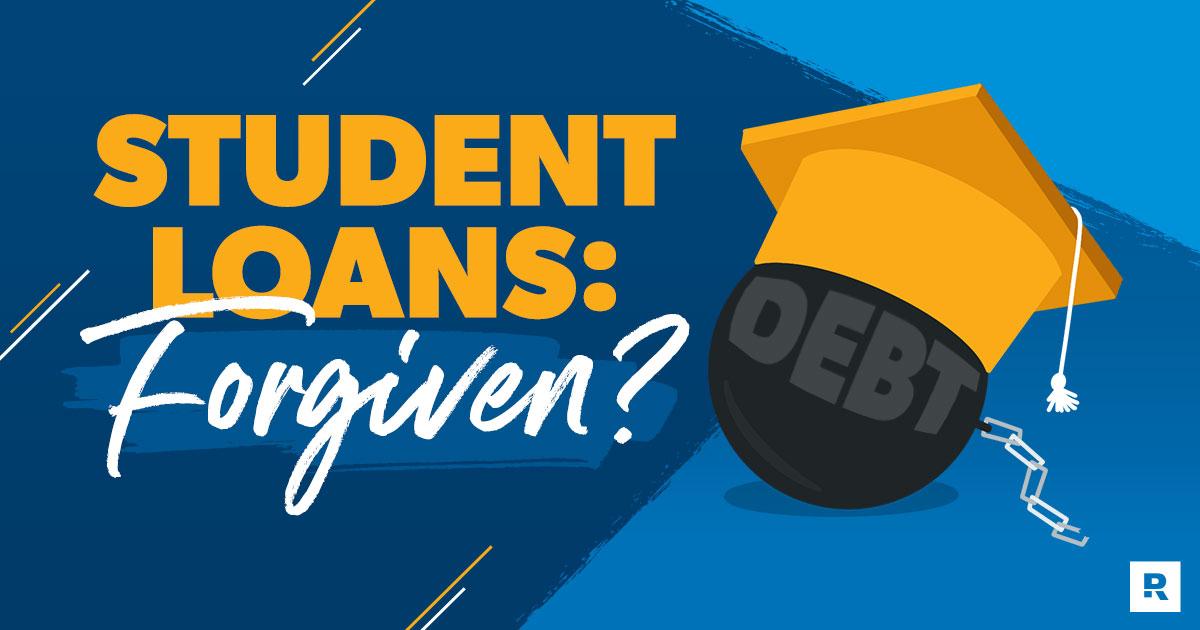In the ever-evolving landscape of higher education and economic policy, the topic of student loan forgiveness has emerged as a lightning rod for debate and decision-making. What began as a financial relief measure for millions of borrowers has grown into a complex political battleground, where economic realities intersect with ideological divides. As policymakers weigh the potential benefits and drawbacks of forgiving student debt, the ripple effects extend far beyond personal finances, influencing elections, party platforms, and the broader national discourse. This article delves into the multifaceted world of student loan forgiveness, exploring not only its financial implications but also the profound political ramifications that continue to shape the future of American society.
The Evolution of Student Loan Forgiveness Policies
Since the inception of federal student loans in the mid-20th century, policies around loan forgiveness have undergone significant transformation, reflecting broader societal and economic shifts. Originally, forgiveness programs were narrowly tailored, primarily targeting public service workers and those in specific professions such as teaching or nursing. These early initiatives were designed to incentivize careers deemed vital to societal welfare, creating a direct link between loan relief and public good.
As the cost of higher education soared and student debt ballooned into a national crisis, the scope of forgiveness policies expanded. The 2000s saw the introduction of more comprehensive programs, including income-driven repayment plans coupled with eventual forgiveness after 20 to 25 years of consistent payments. This shift marked a philosophical change-from targeted relief to a more universal safety net aimed at preventing lifelong financial hardship.
- 1990s: Limited forgiveness for public servants
- 2007: Income-Driven Repayment plans introduced
- 2010s: Expansion of forgiveness programs and increased political debate
- 2020s: Proposals for broad forgiveness and one-time cancellation plans
The political ramifications of these evolving policies have been profound. Forgiveness programs have become a flashpoint in debates over fiscal responsibility, social equity, and the role of government in higher education funding. While supporters argue that loan forgiveness promotes economic mobility and reduces inequality, opponents caution about the financial burden on taxpayers and potential moral hazard. This tension has fueled partisan divides, influencing election campaigns and legislative priorities.
| Policy Era | Key Feature | Political Impact |
|---|---|---|
| 1990s | Targeted forgiveness for public service | Limited bipartisan support |
| 2000s | Income-based repayment plans | Growing debate on economic fairness |
| 2010s | Expanded forgiveness options | Heightened partisan polarization |
| 2020s | One-time mass forgiveness proposals | Intense political and legal battles |
Economic Impacts on Borrowers and the Broader Market
Forgiving student loans would offer immediate financial relief to millions of borrowers, many of whom struggle with monthly payments that consume a significant portion of their income. This newfound flexibility could encourage increased consumer spending, stimulating sectors beyond education, such as housing, retail, and automotive industries. For young professionals, shedding debt burdens may open doors to entrepreneurship and investment opportunities previously deemed too risky or unattainable.
However, the broader market could experience mixed effects. On one hand, reduced debt levels might lead to improved credit scores, enabling borrowers to access better financing terms. On the other, critics argue that widespread forgiveness could distort lending markets, potentially encouraging riskier borrowing behavior in the future. The ripple effect on inflation and government budgets also remains a contentious point, with some experts cautioning that these economic shifts could fuel unintended consequences.
- Increased consumer spending: More disposable income for essentials and luxuries
- Boost in homeownership: Lower debt-to-income ratios improve mortgage eligibility
- Credit market adjustments: Potential recalibration of interest rates and lending criteria
- Government fiscal impact: Balancing relief costs with long-term economic growth
| Impact Area | Potential Outcome | Time Frame |
|---|---|---|
| Consumer Spending | Up to 10% increase in discretionary spending | Short-term (1-2 years) |
| Housing Market | Increased mortgage approvals by 5-7% | Medium-term (3-5 years) |
| Government Budget | Higher deficits offset by economic growth | Long-term (5+ years) |
Political Divides and Stakeholder Perspectives
At the heart of the debate over student loan forgiveness lies a complex web of political ideologies and stakeholder interests. On one side, progressive policymakers advocate for sweeping debt relief as a catalyst for economic equality and social mobility. They argue that erasing student debt will empower millions of borrowers, stimulate consumer spending, and close the widening wealth gap. These voices often emphasize the moral imperative to alleviate the burden on younger generations who face escalating tuition costs and uncertain job markets.
Conversely, conservative factions express deep reservations about the long-term fiscal impacts and fairness of broad debt cancellation. Critics highlight concerns about government overreach, potential inflationary effects, and the precedent it sets for future financial obligations. For many conservatives, the principle of personal responsibility is paramount, with an emphasis on the idea that loans are contracts that must be honored. This group often questions whether forgiveness disproportionately benefits higher-income earners who took on larger debts for advanced degrees.
Stakeholders beyond politicians also weigh in with diverse perspectives:
- Borrowers: Some view forgiveness as a lifeline, while others worry about the implications for credit and future borrowing.
- Educational Institutions: Concerns emerge about incentives for tuition inflation if debt relief becomes commonplace.
- Taxpayers: Opinions vary, with debates centering on who ultimately shoulders the financial burden.
- Financial Markets: Lenders and investors closely monitor policy changes that could affect loan portfolios and risk assessments.
| Stakeholder | Primary Concern | Political Alignment |
|---|---|---|
| Progressive Lawmakers | Economic equity and social justice | Left |
| Conservative Lawmakers | Fiscal responsibility and fairness | Right |
| Student Borrowers | Debt relief and financial stability | Varied |
| Taxpayers | Cost and tax implications | Varied |
Long-Term Consequences for Higher Education Funding
The ripple effects of student loan forgiveness extend far beyond the immediate relief for borrowers, deeply influencing the fiscal landscape of higher education. As federal and state budgets grapple with reallocating resources, universities may face shifts in funding priorities that alter the very fabric of academic offerings and research initiatives. Public institutions, in particular, could encounter fluctuating enrollment patterns as financial barriers are recalibrated, potentially prompting a reassessment of tuition strategies and scholarship programs.
In the long term, policymakers might adopt a more cautious stance toward higher education funding, wary of the precedent set by large-scale debt cancellations. This could lead to:
- Increased scrutiny over budget allocations for universities
- Potential tightening of grants and subsidies aimed at student aid
- Greater emphasis on accountability and measurable outcomes for funding recipients
Moreover, the uncertainty surrounding loan forgiveness programs could prompt a shift toward alternative funding models. Public and private sectors might explore partnerships or investment in education technology and vocational training as viable complements-or even substitutes-to traditional four-year degrees. This evolving funding ecosystem challenges institutions to innovate in how they attract and retain students while ensuring financial sustainability.
| Funding Impact | Short-Term Effect | Projected Long-Term Outcome |
|---|---|---|
| Federal Aid Allocation | Increase in emergency relief funds | Heightened budget scrutiny and conditional funding |
| Tuition Revenue | Stabilization due to forgiven debt | Possible decline if enrollment shifts diversify |
| Private Investment | Cautious optimism in innovation funding | Growth in alternative education models |
Strategic Recommendations for Sustainable Reform
To ensure long-term success and political viability, policymakers must adopt a multi-faceted approach that balances debt relief with fiscal responsibility. A strategic blend of targeted forgiveness programs and robust income-driven repayment plans can create a sustainable ecosystem that supports borrowers without overwhelming taxpayers. Prioritizing transparency and clear communication will be crucial in maintaining public trust and minimizing political polarization.
Engaging stakeholders from diverse backgrounds-students, educators, financial institutions, and legislators-can foster collaborative problem-solving and innovative solutions. Consider the following key strategies:
- Means-tested forgiveness: Allocate relief to borrowers most in need, reducing the financial burden on middle- and high-income earners.
- Repayment incentives: Encourage timely payments and public service through interest rate reductions or loan forgiveness bonuses.
- Financial education: Integrate mandatory counseling to empower students with better borrowing decisions and repayment literacy.
Below is a comparative overview of potential reform elements and their political implications:
| Reform Element | Political Benefit | Potential Risk |
|---|---|---|
| Targeted Forgiveness | Builds bipartisan support | May exclude some borrowers |
| Income-Driven Repayment | Promotes fairness and sustainability | Requires complex administration |
| Financial Literacy Programs | Empowers future borrowers | Long-term impact, slow political payoff |
Ultimately, embracing a balanced, pragmatic reform agenda can mitigate political fallout and forge a path toward a more equitable and financially stable future for student borrowers nationwide.
The Way Forward
As the debate over student loan forgiveness continues to unfold, it becomes clear that this issue is more than just a financial calculation-it is a reflection of broader societal values and political priorities. The ripple effects extend beyond balance sheets, shaping voter alliances, legislative agendas, and the very discourse around education and opportunity in America. Whether forgiveness emerges as a lasting policy or a fleeting headline, its political ramifications will undoubtedly influence the landscape for years to come, reminding us that every dollar forgiven carries with it a story of power, promise, and possibility.

